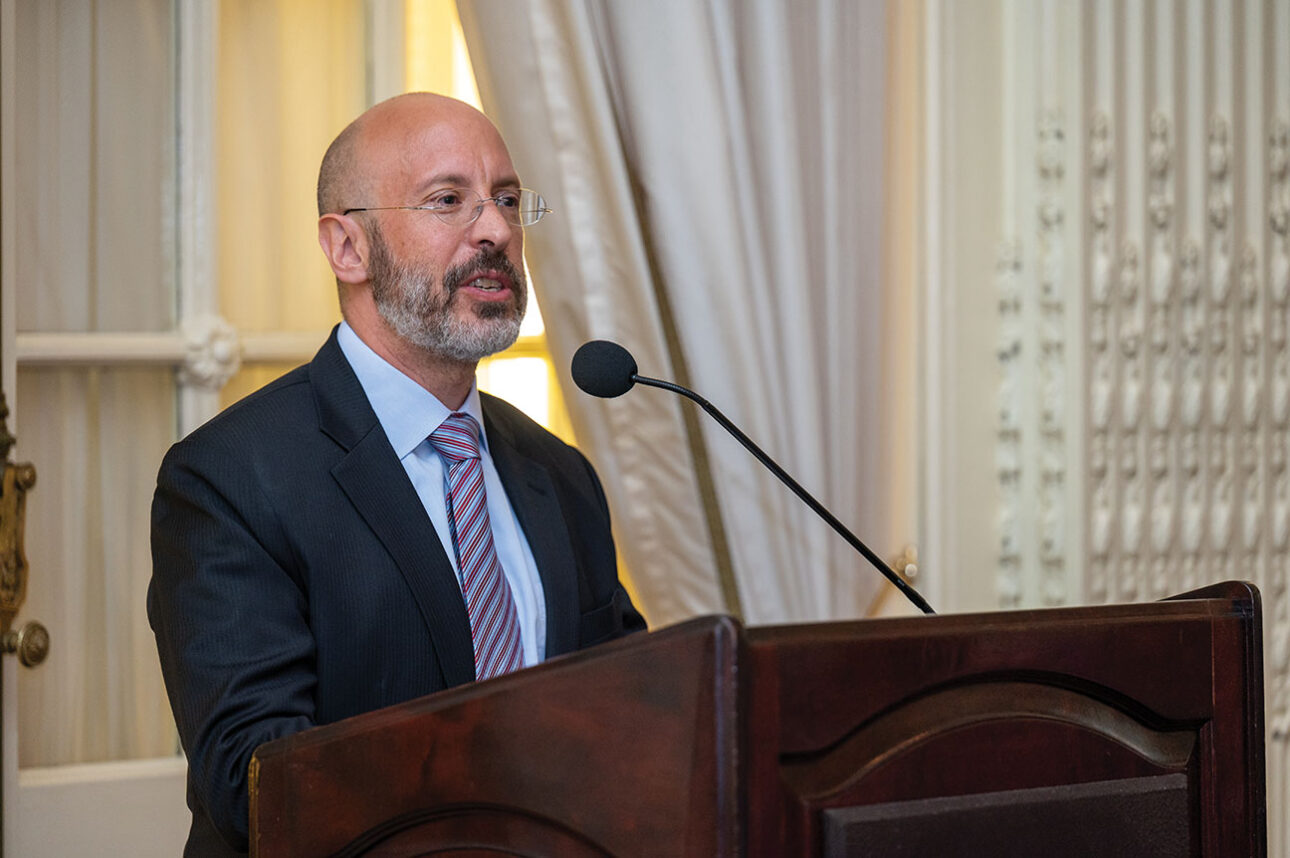There’s a mystery about UNESCO’s denial last week of Jewish connections to the Temple Mount and the Western Wall.
It’s not that the resolution was proposed by some of the usual suspects (Algeria, Egypt, Lebanon, Morocco, Oman, Qatar and Sudan). That’s expected.
Nor was it that the resolution passed, with 24 countries supporting, six opposing, and 26 abstaining. That’s also expected, from the perennial alliance between evil and cowardice.
No, the real mystery is this: Since the Jewish connections to the Temple Mount and Western Wall are crystal clear, how could anyone believe otherwise?
The answer is the way in which people hold beliefs. All of us hold beliefs in three ways:
– Hold and apply.
– Hold and do not apply.
– Hold if X.
Hold and apply
These are normal beliefs. In appropriate situations, we affirm them verbally or base our actions on them.
We weight all of our beliefs by credibility, importance, and other factors. Although the scale is arbitrary, such beliefs might be weighted from 1 to 10. In case of conflicts between beliefs, we apply the beliefs with higher individual or combined weights. We place the losing beliefs in the “Hold and do not apply” category.
Hold and do not apply
These are beliefs that we put aside because they conflict with other beliefs to which we give more weight. We do not deny them, but neither do we apply them.
For example, a central belief of the Pythagoreans was that everything could be explained by whole numbers and ratios of whole numbers. As a central belief, it was heavily weighted. They weren’t going to give it up. However, then they discovered that certain quantities couldn’t be explained that way, such as the hypotenuse of a right triangle whose shorter sides were both of length 1. They couldn’t deny it, but to apply it meant rejecting their central belief, so they didn’t.
Almost certainly, officials who voted for the UNESCO resolution know perfectly well that their resolution’s implication is false. However, they do not apply their knowledge because they know that they would be in serious trouble if they did.
Hold if X
These are beliefs that we hold only if a certain condition or conditions are true.
The most obvious case is when beliefs depend on matters of fact. Will I get wet if I go outside? I hold that belief if I look out the window and see that it is raining. If it is not raining, I do not hold the belief.
However, there are other cases of this type of belief-holding. Harvard philosopher Hilary Putnam told how he reconciled his religious and secular beliefs:
“As a practicing Jew, I am someone for whom the religious dimension of life has become increasingly important …Those who know my writings from that period may wonder how I reconciled my religious streak and my general scientific materialist worldview. The answer is that I didn’t reconcile them. I was a thoroughgoing atheist, and I was a believer. I simply kept these two parts of myself separate.”
Putnam weighted his religious and materialist beliefs differently in different situations. If he was in synagogue, he assigned weight 10 to his religious beliefs and weight 0 (do not hold) to his materialist beliefs. If he was in his office at Harvard, he assigned weight zero to his religious beliefs and some non-zero weight to his materialist beliefs.
How we weight beliefs
We weight our beliefs by three main factors:
– How much the beliefs fit our existing worldview.
– How much we want to hold the beliefs.
– How much evidence there is for the beliefs.
Notice that evidence comes last. Our assessment of evidence is heavily influenced by the first two factors.
Our worldview contains general beliefs by which we interpret new information and accept or reject new beliefs.
For example, if news reporters believe that the Temple Mount is a Muslim holy site with no connection to Judaism, then they interpret any Israeli attempt to secure the site as illegitimate. If a terrorist stabs four people and gets shot by the IDF, the news headline will be “Palestinian Man Killed by Israeli Soldiers.”
Likewise in the United States, if we believe that police routinely harass and murder black people, then we tend to interpret any contact between police and blacks as an instance of racism.
That’s why interest groups hammer away so relentlessly with propaganda memes. They want to bias your perception so that everything seems to confirm their narrative. It doesn’t matter if you later discover that their memes are based on lies. They’ve got control of your perceptual filters, so you’ll tend to see what they want you to see.
So even if you don’t work for UNESCO (thank goodness), carefully scrutinize memes and constantly-repeated political themes. If in the end you decide to believe something, then it’s fine; but don’t let anyone smuggle such beliefs into your mind. And be alert for your own biases. If you intentionally “hold but do not apply” some beliefs, at least be aware that you’re doing it.






















 More news and opinions than at a Shabbat dinner, right in your inbox.
More news and opinions than at a Shabbat dinner, right in your inbox.